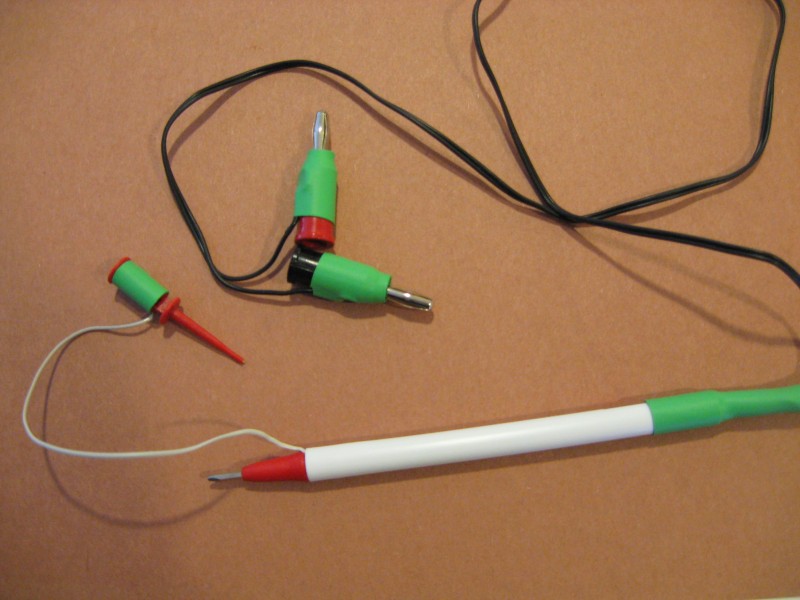A quick test of my SWR meter that I have been working on for the past few weeks told me that something was awry. It is a slight modification of that circuit, adding a couple of capacitors and replacing the two ammeters with an Atmega8 microcontroller’s ADC unit. I figured if I could stabilize the voltages sufficiently, the ADC could read them and directly calculate the SWR. So I am sure that at least half the problem is that I made some assumption in SPICE that does not account for or some newbie error like that.
I looked at the DC levels and all the connections. I double checked the schematic. I don’t have a low-frequency (<150MHz) signal source, so I just went whole hog and plugged in my radio. Pretty much no matter what I used for the load (short, open, 50 ohms, etc.) I could not get anything other than the full reflection voltage. But my silly multimeter doesn’t do 150MHz. I need an oscilloscope. Or whatever they used before oscilloscopes. An RF probe. So I built one.
After poking around on the internet, I found N5ESE’s classic RF probe, which seems to have been duplicated in many places, even as as kit from Hendricks QRP Kits. I rounded up the parts and put it together. I had the bright idea of stuffing it into a small bit of 1/4″ copper tubing to shield it. I ground down the end of a small allen wrench to be the tip of the probe. I put it all together, added a bit of epoxy and some heat-shrink tubing.
Disappointment must be my lot in life because the RF probe was not working right either. Measuring the voltage across a 50-ohm dummy load (three 3-watt 150-ohm resistors in parallel), yielded 30+ volts when my radio was set to 1/2 watt. Just for reference, 1/2 watt over 50 ohms is 5 volts. If I bumped my radio up to 5 watts, the probe said 250+ volts. My multimeter was not happy about that.
I built another one on a spare breadboard. It worked like a champ. Even with the extra capacitance of the breadboard (or maybe because of it???). And when I say it worked fine, I mean it worked fine at 150MHz. I tore the first probe apart and tested the components. If it really was putting out 250 volts, the diode and capacitor should be dead. The multimeter says they are both fine. I test the probe out of its container. It is fine. I build a new container, this time fitting the copper tubing into a pen tube. No epoxy. I test it again and this time it works. Hooray!!! The picture above is my final product.
Now I need to put it to work debugging my broken SWR meter. Maybe if I can assemble these simple circuits, I can graduate to a real project like the MMR40 transceiver.

